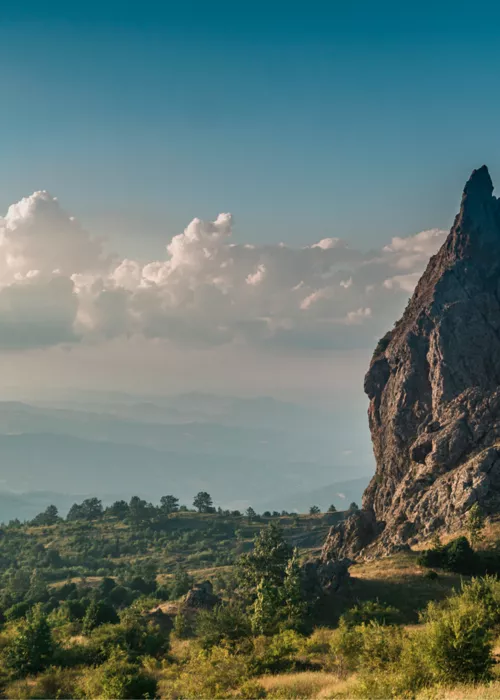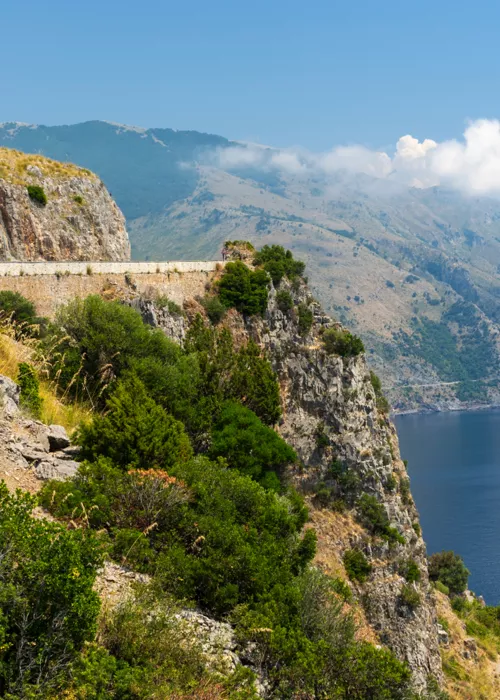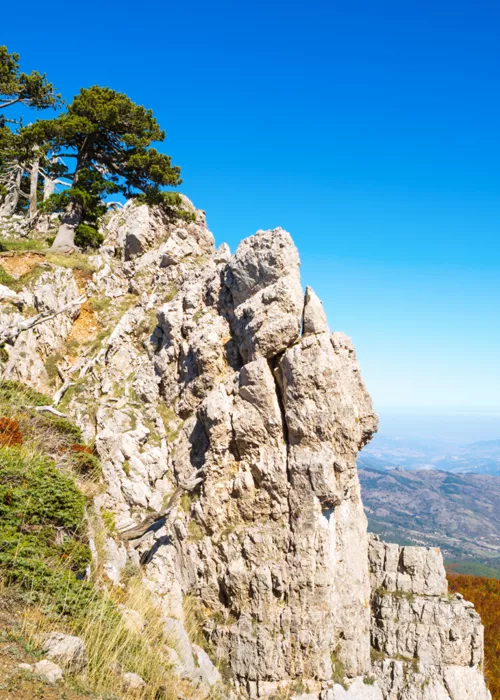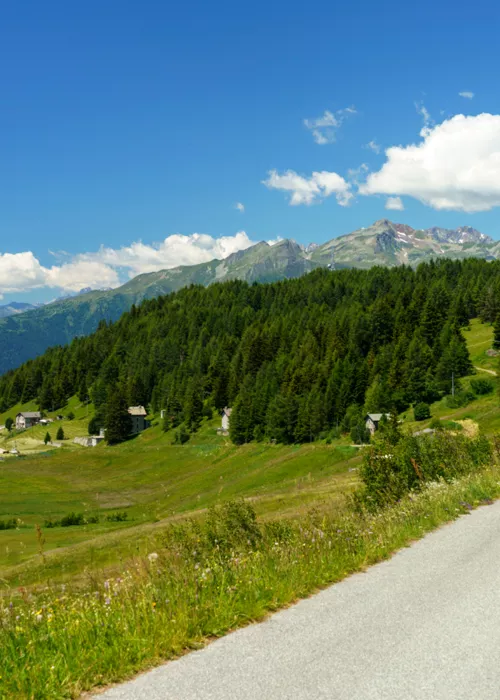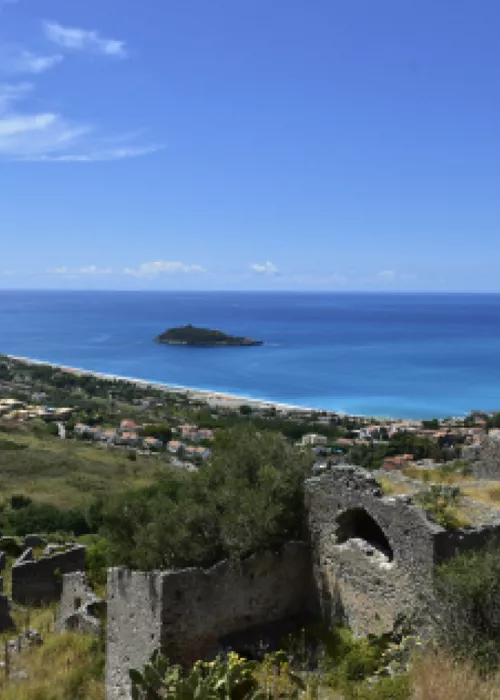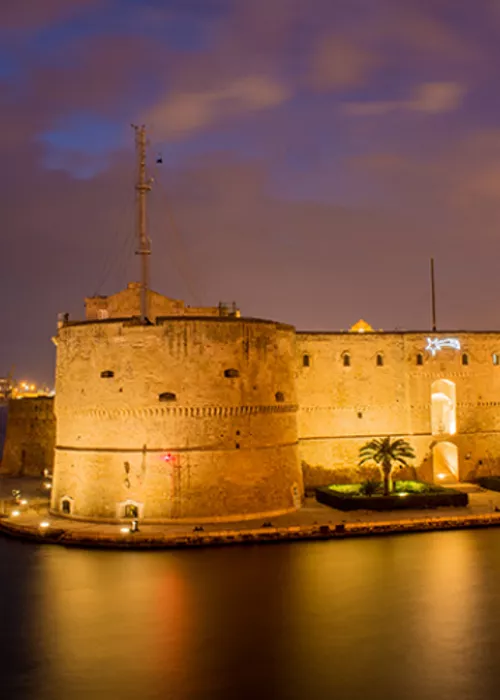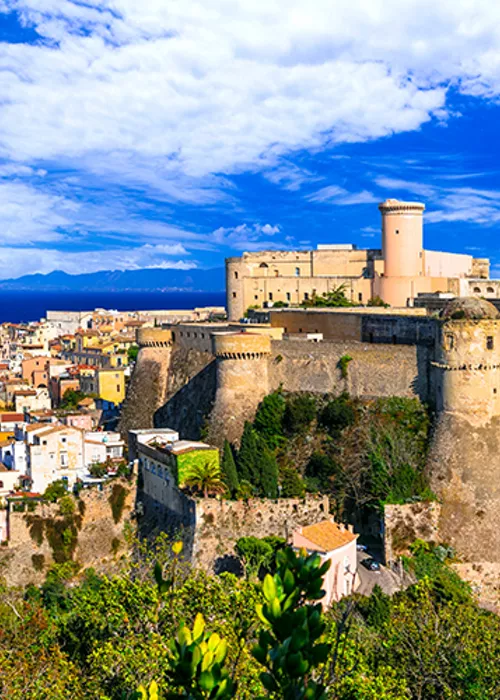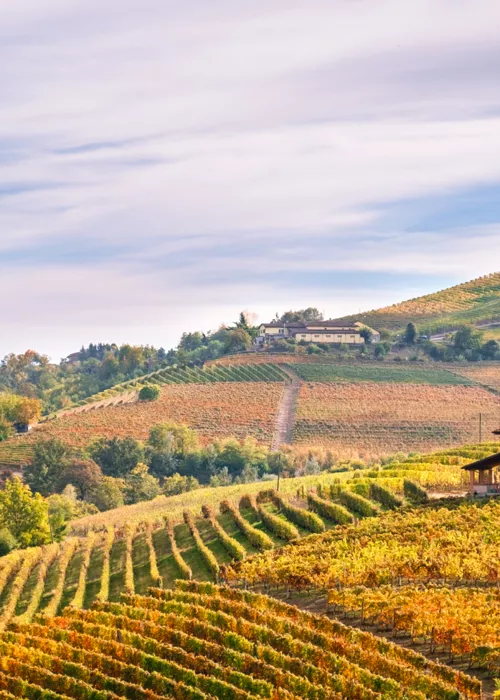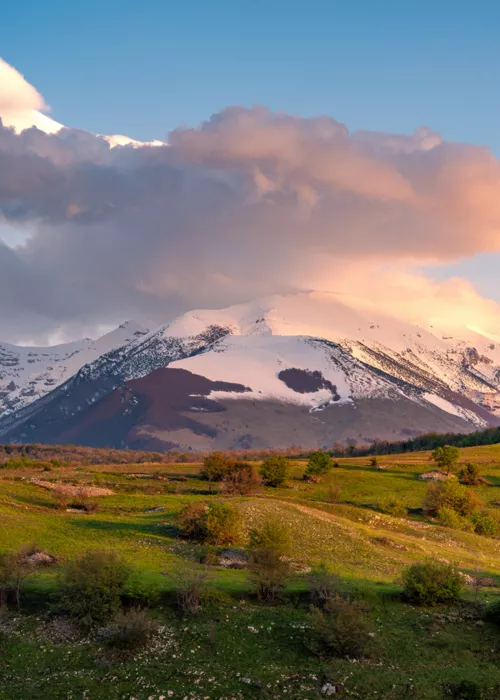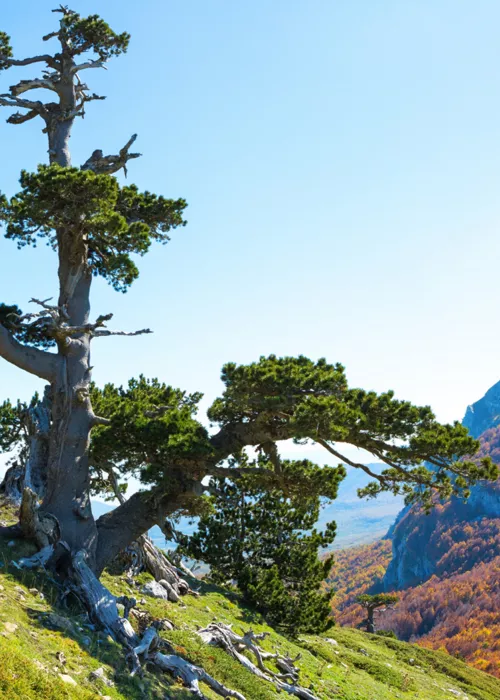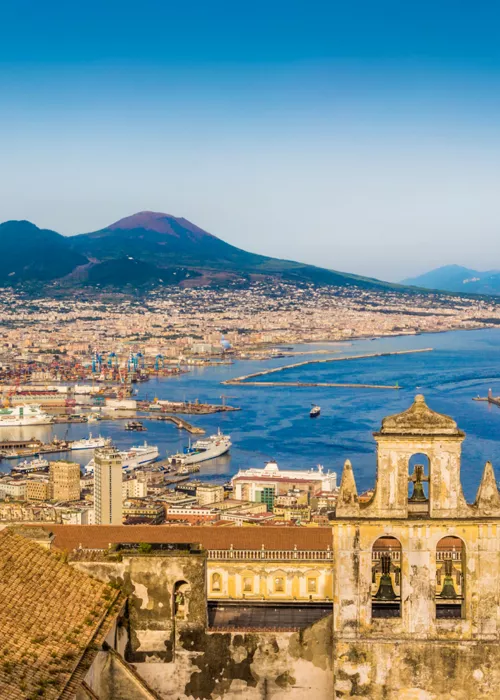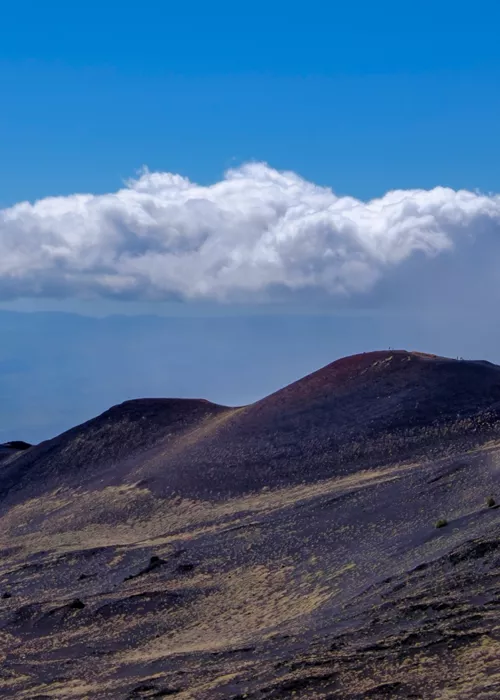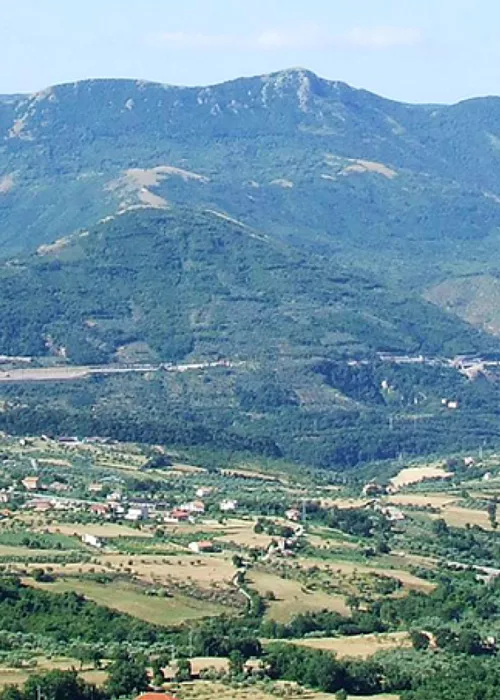Shrine of Santa Maria delle Armi in Cerchiara, Calabria

Our journey starts in Cerchiara di Calabria. It is located on the eastern Calabrian side of the Pollino massif, 650 m above sea level, and about 20 km from the Ionian coast. Built in ancient times near the Greek settlement of Arponion, as evidenced by Palaeolithic artefacts in the museums of Cosenza and Sibari, the town came under Longobard domination and then under the Duchy of Benevento. The Cessuta Municipal Archaeological-Speleological Park is located within it, due to the presence of speleological and archaeological sites of particular relevance, and it offers trails and itineraries of great appeal. The Shrine of “Santa Maria delle Armi”, (from the Greek "ton armon", "of the caves"), is of notable historical, architectural and artistic importance. Set into the rock, it incorporates the cave that houses the miraculous image of the Madonna, which is kept in a silver reliquary. The shrine is composed of several structures built partly in local stone and partly carved into the rock: the church, the duke's palace, the pilgrims' hospice and a building used as a hospice for orphans. Until the second half of the 19th century, the shrine operated as a pious house of charity, while today it belongs to Fondazione Santa Maria. Always a destination for pilgrimages, the religious feast of the Madonna delle Armi is celebrated here every year on 25 April.
The town of Cerchiara is also well known for the presence of the Cave of the Nymphs, a natural cavity created by a fracture in the rock, located on the south-eastern slopes of Mount Sellaro, from which hot sulphurous waters gush out to form therapeutic mud, and the Bifurto Abyss, a very deep karstic abyss that descends vertically for 683 metres, discovered in 1961.
Shrine of Our Lady of Mercy in Terranova del Pollino

Leaving Cerchiara, we set off for Terranova del Pollino, in the province of Potenza. Located on the Lucania side of the Pollino National Park, the town is considered the gateway to the park. Founded by the Pignatelli family in the 16th century to encourage the arrival of settlers, hence the name Terranovella, it was a fief of the State of Noia. Situated at Santa Maria della Montagna on the edge of the forest surrounding the town, the Shrine of Our Lady of Mercy dates back to the 16th century and, despite the 20th century reconstruction and subsequent restoration, still retains the glory of its bygone years. The frescoes in the presbytery, depicting St. Peter, St. Paul and the Virgin and Child, are the work of an unknown local painter and decorate the simple single-nave church roofed with wooden trusses.
Take some time to enjoy this magnificent town, enjoy a sumptuous dinner with local products and stay overnight.
Shrine of the Madonna del Pollino in San Severino Lucano

A hearty, tasty breakfast is the best way to start our day. Our itinerary takes us to San Severino Lucano, whose origins date back to the 16th century and whose name derives from the San Severino family, 15th-century feudal lords who owned the fief. 20 km from the town, in the hamlet of Mezzana, is the Shrine of the Madonna del Pollino (1,537 m above sea level).
Built around 1700, the Marian complex, which includes the church, some rooms for the clergy and custodians, and the pilgrim's house, can be reached on foot, by bicycle or by car via a driveway that replaced the old mule track. The church houses the wooden statue of the Madonna and Child seated, blessing and holding the globe in his left hand, which, on the first Sunday in June each year, is carried in procession from the village to the shrine, where it remains throughout the summer.
Situated at a high altitude, the shrine enjoys a broad panoramic view that embraces the surrounding mountains and villages in a truly impressive sight.
A short distance from San Severino, the wonderful Bosco Magnano nature oasis, rich in beeches and large turkey oaks, can be reached on a walking escursion, starting from the centre of the village. Traversed by the Peschiera stream, which is inhabited by otters, an endangered species, it is one of the best known and most popular areas of Pollino National Park, with a car park, a fountain, an adventure park, a hotel and restaurants.
Sanctuary of Santa Maria della Stella di San Costantino Albanese

The last stage of this contemplative journey takes us to San Costantino Albanese, in the province of Potenza.
Located in the Sarmento Valley on the Lucanian side of the Pollino National Park, the village is a treasure trove of arbëreshe culture whose uses and traditions it preserves. Built around 1534, it owes its origin to the arrival of Albanian refugees from Morea (southern Greece) fleeing the invasion of the Ottomans. The newcomers created the farmhouse of Shën Kostandini here, based on an agricultural economy and passing on to this day the uses, customs, language and rituals of Albanian culture. A privileged moment to get to know these people is the second Sunday of May when you can attend the Nusazit, the celebrations in honour of Santa Maria della Stella, protector of San Costantino Albanese. During the ancient rite, papier-mâché puppets, depicting the newlyweds (nusazit), two blacksmiths and a devil, are exploded during the procession that reaches the town from the Sanctuary of Santa Maria della Stella. Carried on the shoulders of the Virgin through the streets of the village, she is only brought back to the shrine after the last puppet has been set on fire. Surrounded by oak and olive trees, the Sanctuary was built in the 17th century on a pre-existing Byzantine building from the 10th-11th centuries, and features, in its architecture, the classic elements of Byzantine art such as the domed dome decorated with suggestive frescoes (17th century) attributed to Belisario Corinthius. In the Sanctuary you can also admire a painting of Our Lady of the Star and a 17th century Baroque altar.
Housed in a building in the historic centre of the town, the Ethnomuseum of the Arbëreshe Civilisation is definitely a must-see place to admire the collection of pastoral work equipment and tools for processing milk, the precious traditional Arbëreshe costumes and the loom for processing and weaving broom. Inside the museum, you can also visit the workshop for the construction of musical instruments such as the "surdulina", similar to the bagpipes, composed of a goat or sheepskin into which reeds are inserted and notes are generated by opening and closing the holes on them.


